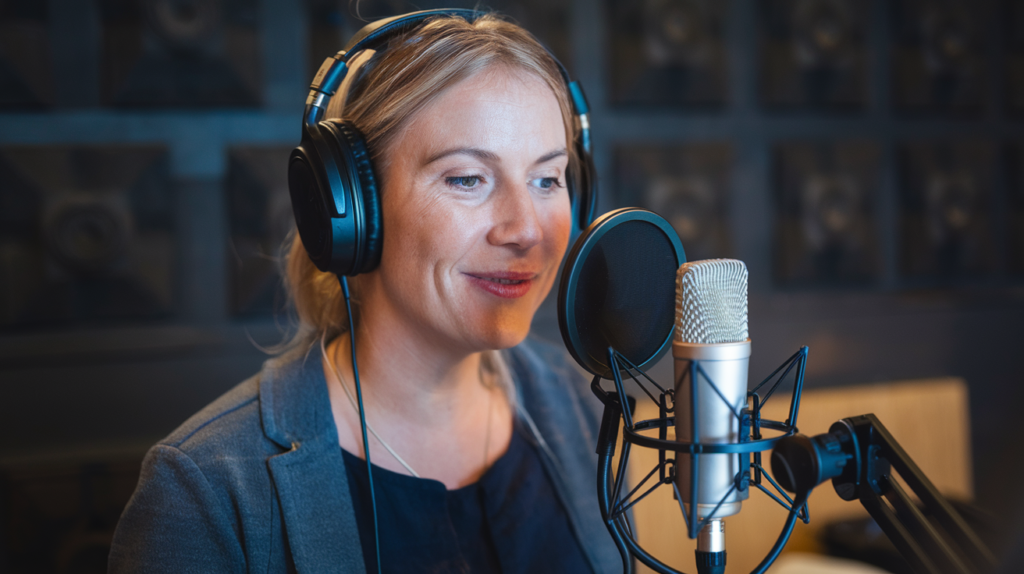Key Takeaways
- The Treaty of Waitangi, signed in 1840, is a foundational document that establishes the framework for Māori language rights and cultural preservation in New Zealand.
- Key principles of the Treaty—partnership, participation, and protection—play a vital role in supporting te reo Māori as an integral part of Māori identity.
- Legal frameworks like the Māori Language Act 1987 provide essential support for the revitalization and promotion of te reo Māori within educational systems and public life.
- Successful initiatives such as Kura Kaupapa Māori schools demonstrate community-driven efforts to enhance fluency and cultural connection among younger generations.
- Ongoing challenges, including societal perceptions and media representation, hinder full realization of Māori language rights; addressing these issues is crucial for promoting acceptance and engagement with te reo.
What if the key to preserving a rich culture lies in understanding its language? The Treaty of Waitangi, signed in 1840, holds immense significance for Māori rights, especially when it comes to their language. As New Zealand grapples with the implications of this historic agreement, you might wonder how it shapes Māori language rights today.
Māori language is more than just words; it’s a vessel for identity and heritage. With ongoing efforts to revitalize te reo Māori, understanding the Treaty’s role becomes crucial. It not only acknowledges past injustices but also sets the stage for future linguistic empowerment. Dive into this exploration of how the Treaty of Waitangi impacts Māori language rights and discover why it matters now more than ever.
Overview of the Treaty of Waitangi
The Treaty of Waitangi, signed in 1840, marks a crucial moment in New Zealand’s history. This agreement between Māori chiefs and the British Crown established a framework for governance and rights. The Treaty consists of three main principles: partnership, participation, and protection.
The principle of partnership emphasizes mutual respect and collaboration between Māori and the Crown. It calls for both parties to work together to achieve shared goals while acknowledging each other’s distinct roles. Participation ensures that Māori can engage meaningfully in decision-making processes affecting their lives and communities.
Protection focuses on safeguarding Māori culture, language, and resources. The recognition of te reo Māori as an essential part of cultural identity aligns with this principle. Efforts to revitalize the language stem from the commitment made through the Treaty, highlighting its ongoing significance.
Today, discussions about the Treaty often center on historical injustices faced by Māori tribes. These conversations contribute to efforts aimed at addressing past grievances while promoting future linguistic empowerment. The legacy of the Treaty continues to shape policies supporting te reo Māori’s revitalization within educational systems and public life.
Understanding these principles is vital for recognizing how they influence contemporary issues surrounding Māori language rights today.
Historical Context of the Treaty
The Treaty of Waitangi, signed in 1840, plays a crucial role in New Zealand’s history and its implications for Māori language rights. This foundational document symbolizes the agreement between Māori chiefs and the British Crown and sets the stage for understanding contemporary issues surrounding te reo Māori.
Signing and Key Provisions
The signing occurred on February 6, 1840, with representatives from both sides coming together at Waitangi. The Treaty consists of three key principles: partnership, participation, and protection. Partnership establishes a framework for cooperation between Māori and the Crown; it fosters a spirit of collaboration that remains essential today. Participation guarantees that Māori voices are integral to decision-making processes affecting their communities. Protection emphasizes safeguarding not only traditional lands but also cultural expressions such as te reo Māori.
Impacts on Maori Society
The impacts of the Treaty have been profound within Māori society. Historically, breaches of its principles led to significant loss of land and resources; this has fueled ongoing discussions about justice and restitution. Today, recognition of these historical injustices underpins efforts aimed at revitalizing te reo Māori. Educational initiatives now incorporate language programs that reflect both cultural significance and identity affirmation. The legacy of the Treaty continues to shape how policies support te reo Māori’s integration into public life—ensuring that younger generations can connect with their heritage while preserving their linguistic rights.
Understanding this historical context enhances your grasp of how past events influence current discussions around language rights for Māori people in New Zealand today.
Maori Language Rights Under the Treaty
Māori language rights under the Treaty of Waitangi are crucial for preserving cultural identity and ensuring linguistic empowerment. The Treaty recognizes te reo Māori as an essential element of Māori heritage, affirming its importance in New Zealand’s societal fabric.
Legal Framework Supporting Language Rights
The legal framework surrounding Māori language rights stems from the principles outlined in the Treaty. The New Zealand government commits to promoting and protecting te reo Māori through various legislation, including the Māori Language Act 1987. This act established a basis for revitalizing and maintaining the language, emphasizing its status as a taonga (treasure). Recent policies also reinforce this commitment by integrating te reo Māori into education systems and public services, ensuring that future generations can learn and use their native language.
Case Studies of Language Revitalization
Case studies illustrate successful initiatives aimed at revitalizing te reo Māori within communities. For instance, Kura Kaupapa Māori schools—total immersion schools teaching primarily in te reo—have emerged as vital institutions for fostering linguistic skills among young learners. Another example is community-driven programs where local groups organize events to promote speaking te reo in everyday settings, enhancing visibility and usage outside formal environments. These efforts demonstrate how grassroots movements play a significant role in sustaining and growing interest in the language while empowering individuals to embrace their cultural roots.
Modern Implications of the Treaty
The Treaty of Waitangi continues to shape New Zealand’s landscape, particularly regarding Māori language rights and cultural identity. Its principles play a crucial role in modern governance and community engagement.
Current Legislative Measures
Current legislative measures reinforce te reo Māori as an official language and promote its use across various sectors. The Māori Language Act 1987 is pivotal; it asserts that everyone has the right to speak te reo Māori, fostering an environment where the language can thrive. Recent amendments further enhance this framework, ensuring funding for revitalization initiatives and supporting its integration into public services. For instance, agencies are now required to incorporate te reo Māori into their operations, reflecting a commitment to linguistic diversity and cultural respect.
Role of Education in Promoting Maori Language
Education serves as a cornerstone for promoting te reo Māori among younger generations. Kura Kaupapa Māori schools embody this approach by immersing students in the language from an early age, reinforcing cultural identity while enhancing fluency. Additionally, mainstream schools are increasingly incorporating bilingual programs that teach both English and te reo Māori, encouraging wider acceptance and understanding of the language. Community-driven initiatives also play a vital role; workshops, resources, and local events engage families in learning together. By making education accessible and relevant, these efforts contribute significantly to preserving the language for future generations.
Challenges Facing Maori Language Rights
The challenges surrounding Māori language rights are multifaceted and deeply rooted in historical context. Various factors hinder the full realization of these rights, impacting the preservation and revitalization of te reo Māori.
Societal Perceptions and Attitudes
Societal perceptions play a crucial role in shaping attitudes toward te reo Māori. While there’s growing recognition of its importance, some segments still view the language as less relevant in modern society. This perception can discourage individuals from learning or using te reo, leading to reduced visibility in daily life. Public awareness campaigns that celebrate Māori culture and language can help shift these attitudes, fostering greater acceptance and enthusiasm for embracing te reo.
Media Representation and Influence
Media representation significantly influences how languages are perceived and valued within society. Limited representation of te reo Māori across mainstream media platforms contributes to its marginalization. When you see more prominent use of the language in television shows, movies, or advertisements, it normalizes its presence and encourages wider public engagement. Greater collaboration with content creators to include authentic voiceovers or dialogues in te reo could enhance visibility while showcasing the richness of Māori culture.
By addressing these challenges collectively—through education initiatives, societal support, and increased media presence—there’s potential for significant progress in affirming Māori language rights and ensuring its vibrancy for future generations.
Conclusion
The Treaty of Waitangi serves as a vital framework for Māori language rights and cultural preservation. Understanding its principles can empower you to participate in discussions about the importance of te reo Māori.
As initiatives grow and evolve, you’ll see how education, community involvement, and policy changes contribute to revitalizing the language. The ongoing journey toward recognizing and affirming these rights is essential for ensuring that future generations connect with their rich heritage.
By actively engaging in this dialogue, you help create a more inclusive society that values Māori culture and language. Together we can foster an environment where te reo Māori thrives.
Frequently Asked Questions
What is the Treaty of Waitangi?
The Treaty of Waitangi was signed in 1840 between Māori chiefs and the British Crown. It serves as a foundational document that outlines principles of partnership, participation, and protection, aiming to recognize Māori rights and promote mutual respect.
How does the Treaty affect Māori language rights?
The Treaty acknowledges historical injustices faced by Māori and underlines the importance of te reo Māori for cultural identity. Its principles guide contemporary policies aimed at revitalizing and protecting the language within New Zealand’s education system.
Why is te reo Māori important for cultural identity?
Te reo Māori is integral to Māori heritage and identity. It embodies unique customs, traditions, and values that connect individuals to their history, making its preservation vital for maintaining cultural continuity.
What initiatives support the revitalization of te reo Māori?
Initiatives like Kura Kaupapa Māori schools provide total immersion in te reo, while community-driven programs encourage everyday use. These efforts help sustain interest in the language among younger generations.
How does legislation support te reo Māori today?
Legislation such as the Māori Language Act of 1987 reinforces te reo as an official language. Recent amendments promote its use across various sectors, ensuring it remains integrated into public life and education.
What challenges do Māori language rights face?
Māori language rights encounter societal perceptions that may undermine their relevance today. Limited visibility in mainstream media also contributes to marginalization, highlighting the need for greater awareness campaigns celebrating te ao Māori (the Māori world).
How can media representation impact te reo Māori?
Media representation plays a crucial role in shaping public perception of te reo Māorí. Greater inclusion of authentic use in content can enhance visibility, encouraging wider engagement with the language among all New Zealanders.
Why is education important for preserving te reo Māori?
Education is essential for promoting te reo among younger generations through bilingual programs and immersion schools. It equips students with linguistic skills while fostering an understanding of their cultural roots, ensuring future generations continue to embrace their heritage.







